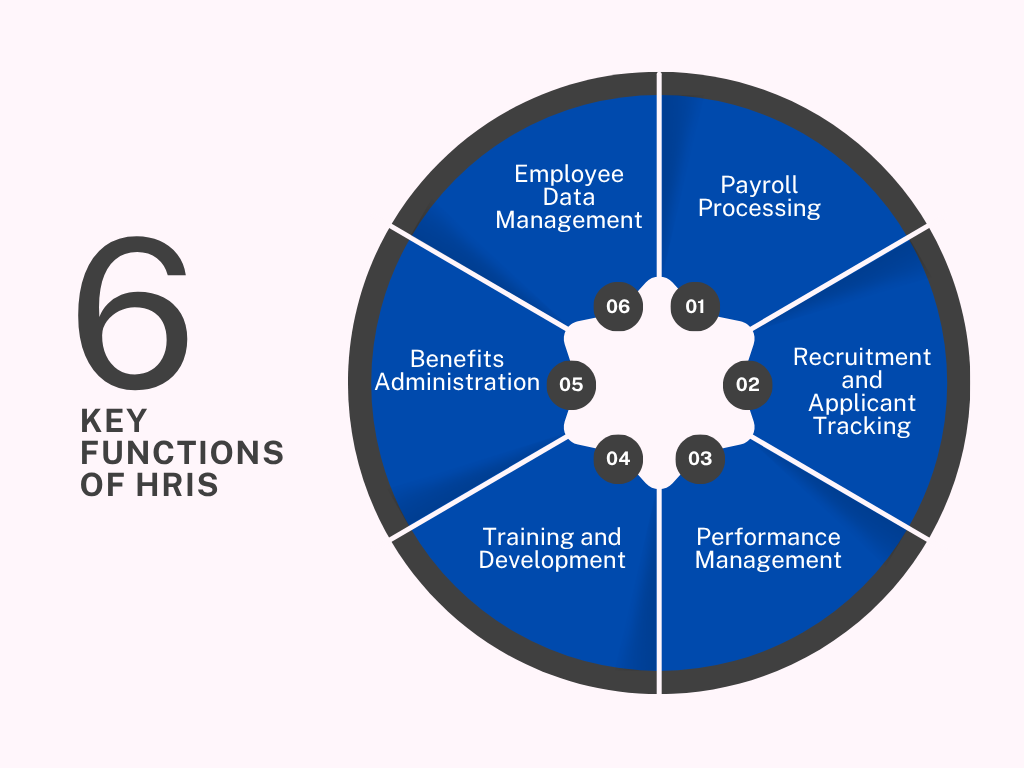Managing human resources efficiently is critical for organizational success in the modern workplace landscape. Human Resources Information Systems (HRIS) have emerged as indispensable tools for businesses to streamline HR processes, enhance productivity, and empower decision-making.
Human Resources Information Systems (HRIS) are pivotal in modernizing HR operations, optimizing workforce management, and driving organizational success. HRIS empowers HR professionals to focus on strategic initiatives and elevate the employee experience by automating processes, enhancing data accuracy, and providing actionable insights. As technology evolves, organizations must adapt to emerging trends and leverage HRIS capabilities to stay competitive in the dynamic business landscape.
This article delves into the intricacies of HRIS, exploring its functions, benefits, implementation considerations, and future trends.
What is Human Resources Information Systems (HRIS)?
Human Resources Information Systems (HRIS) refers to software solutions that facilitate the management of HR tasks and processes electronically. These systems integrate various HR functions into a centralized platform, including payroll, employee data management, recruitment, performance evaluation, training, and benefits administration. HRIS enables HR professionals to automate repetitive tasks, improve data accuracy, and gain valuable insights to drive strategic decision-making.
|
Key Functions of HRIS
Employee Data Management
HRIS centralizes employee information such as personal details, employment history, skills, and performance evaluations. This centralized database ensures data consistency, accessibility, and security, facilitating efficient workforce management.
Payroll Processing
HRIS automates payroll calculations, tax deductions, and compliance with regulatory requirements. It helps generate accurate paychecks, manage employee benefits, and maintain payroll records, reducing errors and saving time.
Recruitment and Applicant Tracking
HRIS streamlines the recruitment process by allowing HR teams to seamlessly post job openings, screen resumes, schedule interviews, and onboard new hires. Applicant tracking features help identify top talent efficiently.
Human Resources Courses In Canada – A Guide

Performance Management
HRIS provides tools for setting performance goals, conducting evaluations, and tracking employee progress. It facilitates continuous feedback, performance appraisals, and identification of training needs to enhance employee performance and engagement.
Training and Development
HRIS supports training initiatives by organizing training programs, tracking employee participation, and assessing training effectiveness. It ensures employees access relevant learning resources to enhance their skills and knowledge.
Benefits Administration
HRIS simplifies benefits enrollment, management, and communication. It allows employees to view and select benefits options, access information, and manage beneficiaries, promoting transparency and employee satisfaction.
Benefits of HRIS
Increased Efficiency: By automating routine HR tasks and workflows, HRIS reduces manual efforts, minimizes errors, and accelerates processes. This efficiency enables HR professionals to focus on strategic initiatives and value-added activities.
- Data Accuracy and Compliance: HRIS ensures data integrity and compliance with regulatory requirements by maintaining accurate records, adhering to privacy standards, and generating reports for audits and regulatory filings.
- Enhanced Decision-Making: HRIS provides actionable insights through analytics, dashboards, and reports. These insights enable HR leaders to identify trends, address issues, and make informed decisions about workforce planning, talent management, and organizational development.
- Improved Employee Experience: HRIS enhances the employee experience by providing self-service capabilities, access to information, and timely communication. Employees can update personal information, view pay stubs, request time off, and access HR resources conveniently.
- Cost Savings: By streamlining processes, reducing paperwork, and minimizing administrative overhead, HRIS helps organizations save costs associated with HR operations. It optimizes resource utilization and improves overall organizational efficiency.
Human Resource Management: Developing People into Assets
Implementation Considerations
- Needs Assessment: Before selecting an HRIS, organizations should assess their specific requirements, budget constraints, and scalability needs. Understanding key pain points and desired outcomes is crucial for choosing the right solution.
- Vendor Selection: Organizations should evaluate HRIS vendors based on product features, user experience, customer support, integration capabilities, and pricing models. Requesting demos, customer references, and conducting thorough due diligence can aid in vendor selection.
- Data Migration and Integration: Smooth data migration from legacy systems and seamless integration with existing software applications are essential for successful HRIS implementation. Organizations should prioritize data security, privacy, and interoperability during integration efforts.
- User Training and Change Management: Adequate training and change management initiatives are vital to ensure user adoption and maximize the benefits of HRIS implementation. HR teams and employees should receive comprehensive training on system functionalities and best practices.
Future Trends in HRIS
Cloud-Based Solutions
Adopting cloud-based HRIS solutions is expected to increase, enabling remote access, scalability, and cost-effectiveness. Cloud platforms offer flexibility, security, and seamless updates, making them attractive options for modern organizations.
AI and Predictive Analytics
HRIS leveraging artificial intelligence (AI) and predictive analytics will enable organizations to forecast workforce trends, identify talent gaps, and personalize employee experiences. AI-driven insights will enhance decision-making and drive strategic HR initiatives.
Mobile Accessibility
Mobile-friendly HRIS applications will become more prevalent, allowing employees to access HR services anytime, anywhere, using their smartphones or tablets. Mobile accessibility enhances employee engagement, responsiveness, and productivity.
Focus on Employee Well-being
HRIS will incorporate features to support employee well-being initiatives, including mental health resources, wellness programs, and work-life balance tools. These features will contribute to employee retention, satisfaction, and overall organizational success.
